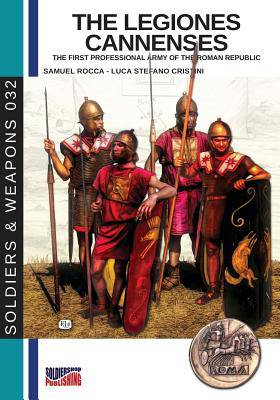
- Afhalen na 1 uur in een winkel met voorraad
- Gratis thuislevering in België vanaf € 30
- Ruim aanbod met 7 miljoen producten
- Afhalen na 1 uur in een winkel met voorraad
- Gratis thuislevering in België vanaf € 30
- Ruim aanbod met 7 miljoen producten
Omschrijving
The Roman army during the Second Punic War, a citizen army, developed also in parallel a professional army, the legiones cannenses or the Cannae's legions, formed by the veterans of the battle of Cannae (216 BCE). These units showed the same characteristics of the Late Republic and Imperial Roman army already one hundred years before the reforms of Marius.
But, how and why a citizen's army became a professional force?
There are three main reasons that could explain the transformation of a citizen's army in a professional force, the split of the legionaries from civic life, consequence of the Senatus Consultum of 215 BCE, which stripped the common soldiers of their civic rights, the peculiar commitment and loyalty to each of the warlords, that the legiones cannenses served, namely Marcus Claudius Marcellus, the conqueror of Syracuse, Publius Cornelius Scipio Africanus, who defeated Hannibal at the battle of Zama, and, last but not least, Titus Quinctius Flamininus, who beat the Macedonian phalanx at the battle of Cynoscephalae, and the evolution and changing of the tactical composition of the legions, from the manipular legion, identical to the other contemporary units, to units which emphasized the primary importance of the cohors and the centuria, as in the late Republican and early Imperial legions.
Specificaties
Betrokkenen
- Auteur(s):
- Illustrator(s):
- Uitgeverij:
Inhoud
- Aantal bladzijden:
- 90
- Taal:
- Engels
- Reeks:
- Reeksnummer:
- nr. 32
Eigenschappen
- Productcode (EAN):
- 9788893274128
- Verschijningsdatum:
- 11/03/2019
- Uitvoering:
- Paperback
- Formaat:
- Trade paperback (VS)
- Afmetingen:
- 178 mm x 254 mm
- Gewicht:
- 226 g

Alleen bij Standaard Boekhandel
Beoordelingen
We publiceren alleen reviews die voldoen aan de voorwaarden voor reviews. Bekijk onze voorwaarden voor reviews.











